Castles
photo © Visit Finland
Largely restored castles:
Olavinlinna Castle
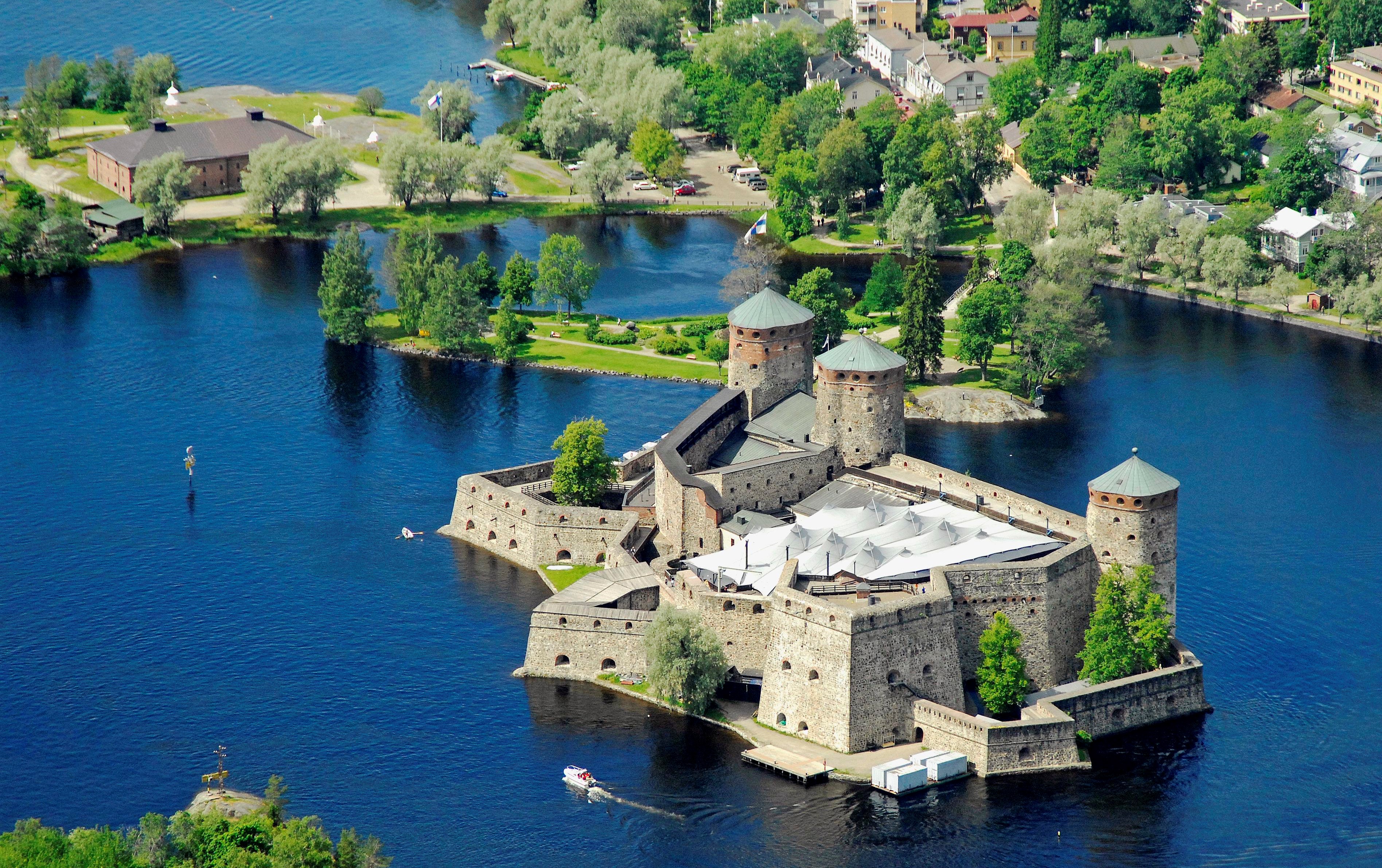
Founded in 1475, Olavinlinna Castle (St. Olaf’s Castle) was built by Swedes on a small rocky island on the biggest lake in Finland, lake Saimaa. Originally the castle had five towers, of which there are three remaining. In 1743 it was occupied by Russia, and the upper brownstone sections of the towers were extended under their rule. The castle has been restored numerous times since the end of the 19th century, and is now one of Finland’s most popular tourist attractions. Although many different events are held here, Olavinlinna Castle is most famous for hosting the world-renowned Savonlinna Opera Festival which takes place annually in July. It is open all year, and the entrance fee includes a guided tour. There are two museums on the grounds, the Orthodox museum which displays icons and religious artefacts from Finland and Russia, and the Castle museum which displays objects found in the Olavinlinna.
Turku Castle
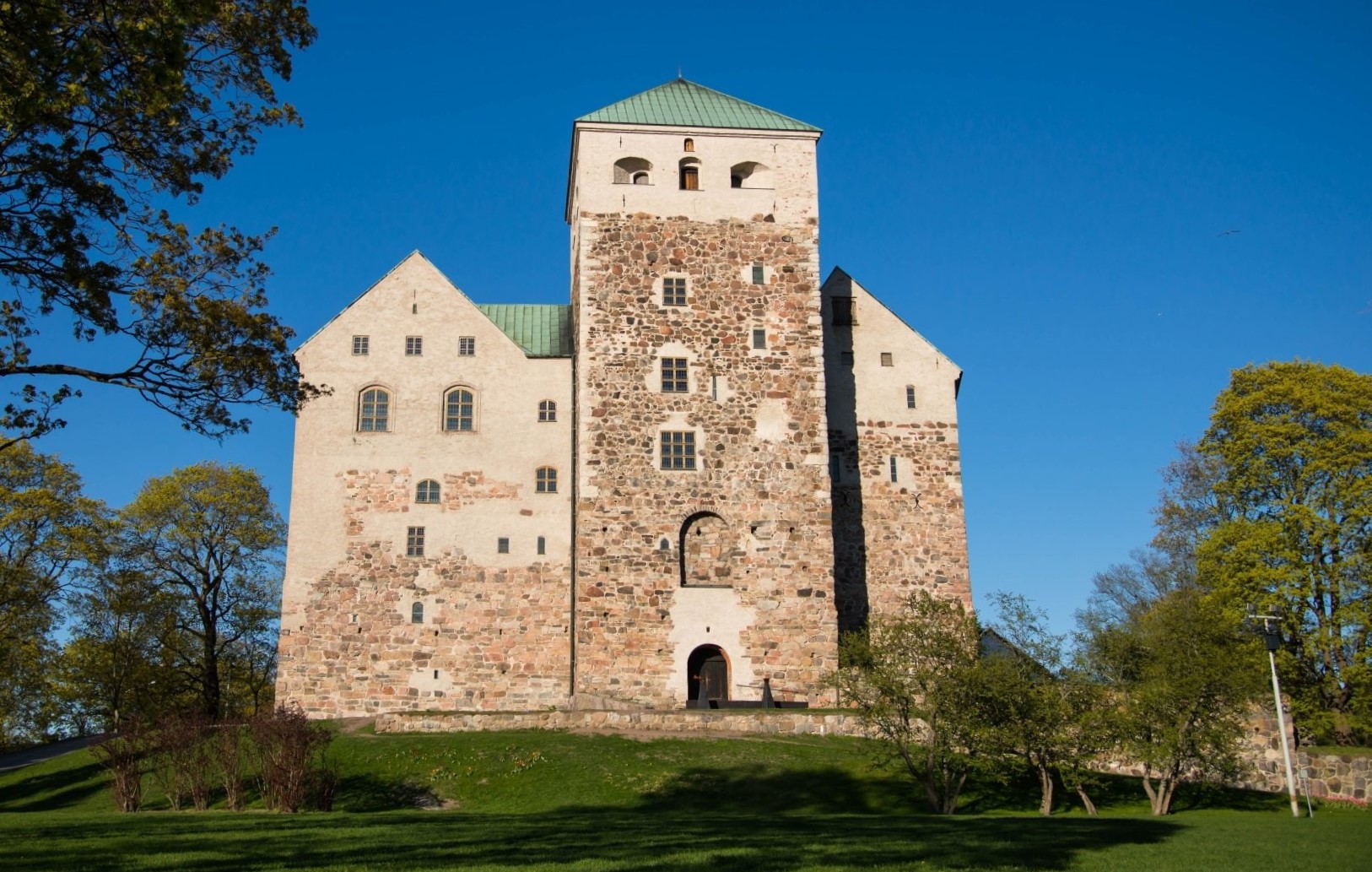
Over 700 years old, Turku Castle was first built betweeen 1280 and 1310. Together with Turku Cathedral, it is one of the oldest buildings still in use in Finland, and is one of the largest medieval castles in the Nordic Countries. Over the centuries a fortified base built by the Swedes for the Royal Governor of Finland and his troops grew into a massive stone castle, and today it is one of the most popular cultural and historic tourist attractions in the country. The castle has a museum which includes such popular attractions as the Stone, Bronze, Iron Age and Medieval Exhibitions, the scale models of ‘Duke John and Catherina Jagellonica’ displaying Renaissance court life, the prison where King Eric XIV was kept, medieval wooden sculptures, and the collections of old toys and fire fighting equipment. Visitors can tour the castle by themselves or join a guided tour, and guide books can be bought at the ticket office. There are high quality mementos and souvenirs on sale in the Museum Shop Fatabur, and there is also a room in the castle which holds various exhibitions for the Provincial Museum.
Häme Castle – Hämeenlinna
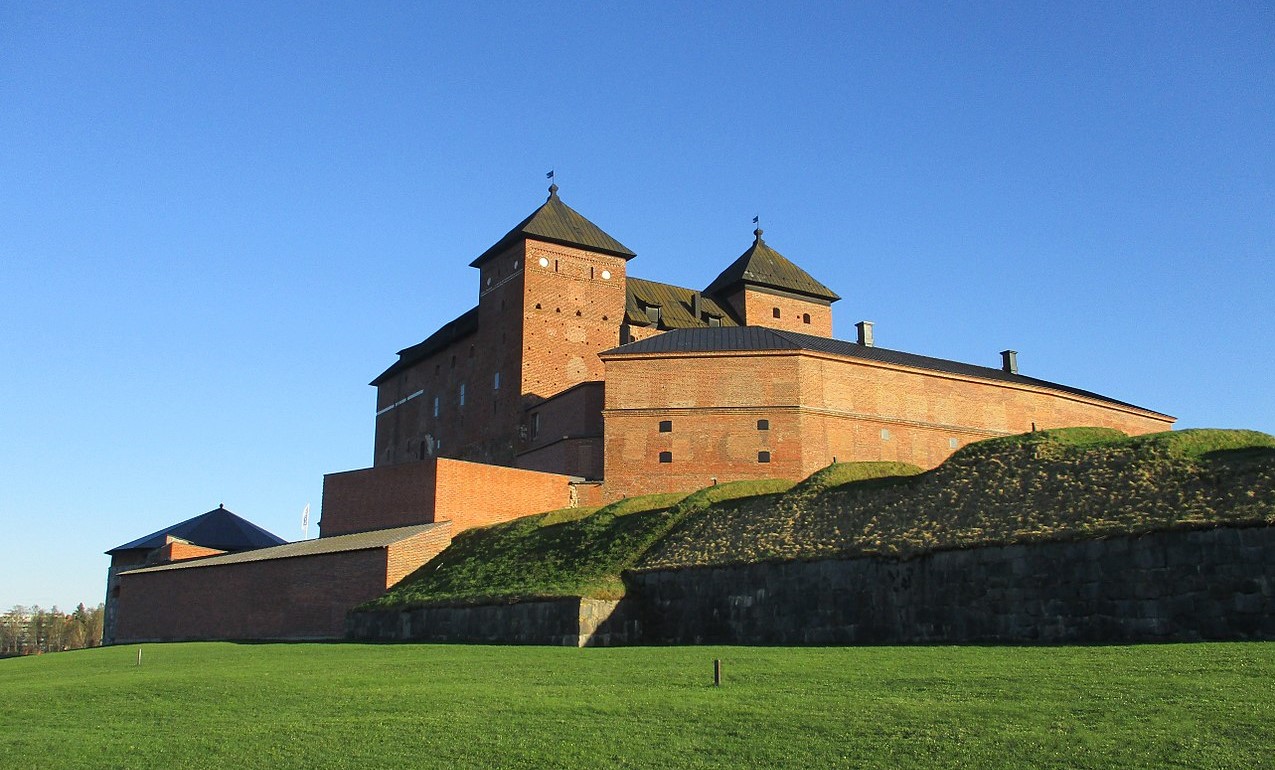
Situated on the shores of Lake Vanajavesi, and thought to date back to the end of the 13th century, Häme Castle is one of Finland’s medieval royal castles. The original fortified camp was built into a residential castle for its commandant in the Middle Ages, and a third storey was added in the 18th century, along with curtain wall buildings which replaced the inner outer walls. From 1837 to 1972 the castle and its surroundings were used as a prison, which was designed by Carl Engel. Today, the inside has been partially remodeled into a contemporary style, and there are three museums located nearby, an artillary museum, a prison museum, and an historical museum.[/caption]
Partly ruined castles:
Raseborg Castle
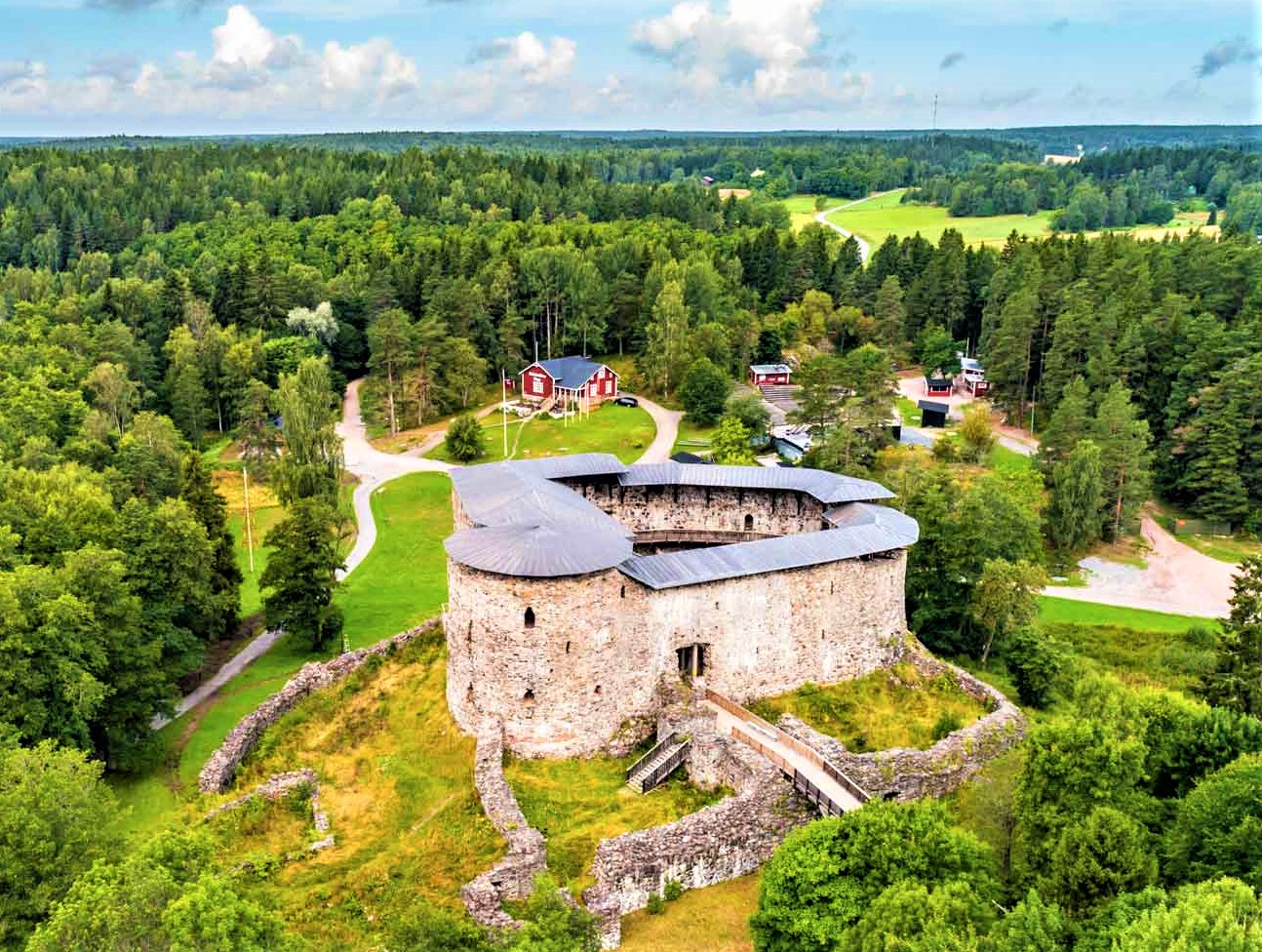
Founded by Bo Jonsson Grip, and completed between 1373 and 1378, Raseborg Castle is a medieval castle, the only one of its kind in Finland, situated on a rock which was originally an island surrounded by water. It was the site of many battles between Swedish and Danish forces, and with pirates, for control of the region. Abandoned in 1550 when Helsinki became more strategically important, restoration began in the 1890s and continued until the late 1980s. Today the ruins of Raseborg Castle are open to the public every day in May, June, July, and August, and at the weekends in September.
Kastelholm Castle
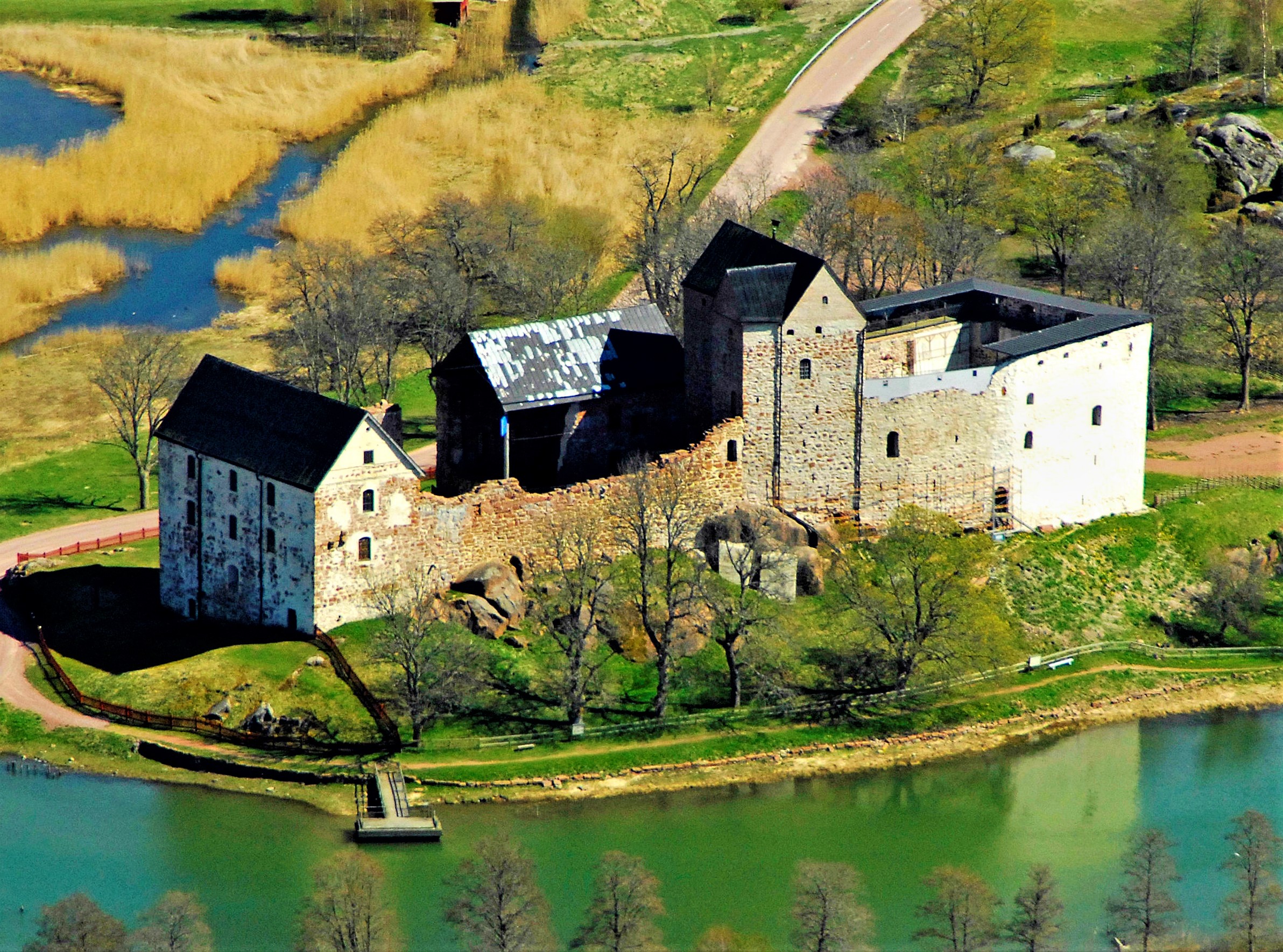
Located in Sund, in the autonomous region of Åland, Kastelholm Castle was built in the late 14th century on a small island surrounded by water and pole-filled moats. Becoming strategically important over the following centuries, the castle was in its heyday in the 15th and 16th centuries. Severely damaged in the civil war of 1599 when the forces of Charles IX attacked it, repairs on the castle weren’t completed until 1631, only for it to burn down in 1745 and fall to ruin. Today, much of Kastelholm Castle has been reconstructed and renovated, and it has become a significant tourist destination thanks to its ease of access from Mariehamn.
Mostly ruined castles:
Kuusisto Castle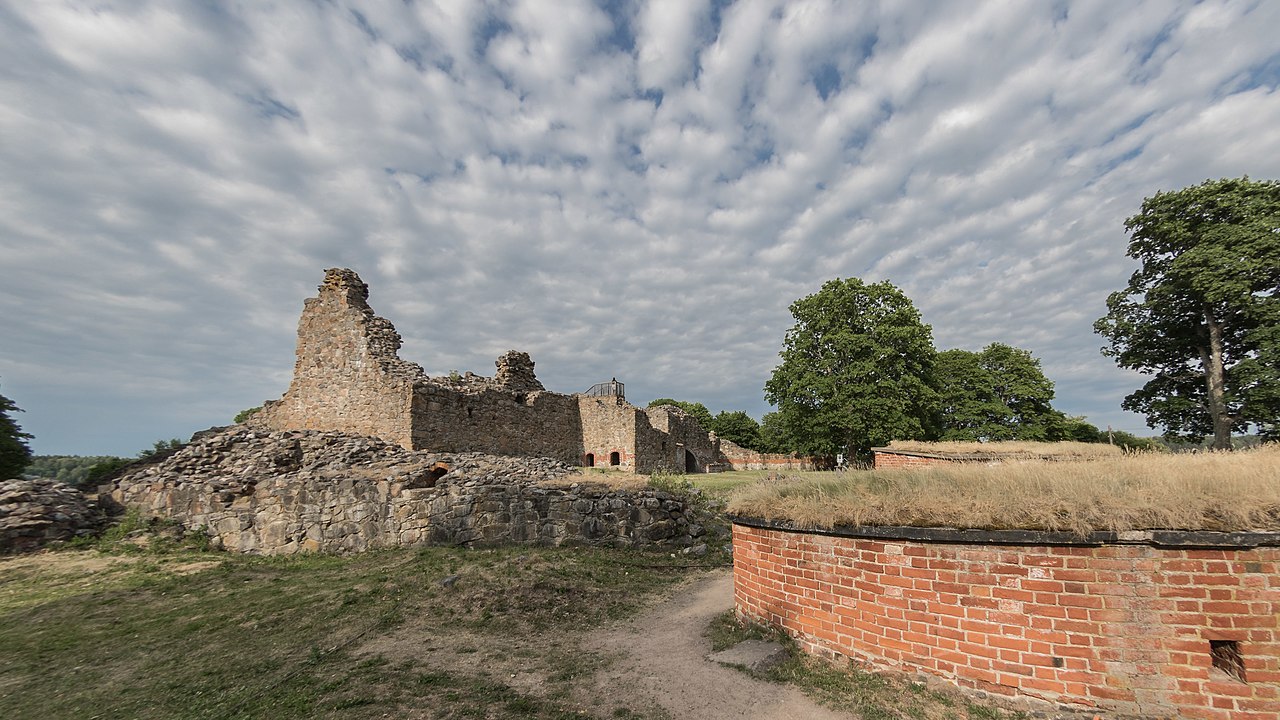
Located in Kaarina near Turku, Kuusisto Castle was a medieval episcopal castle built in 1317 as a refuge for Finnish Catholic bishops, serving as their shelter until the reformation. In use for centuries, it was eventually demolished under Gustav Vasa’s order in 1528. In 1891 excavation and restoration of the site was begun by the National Board of Antiquities, and research continues to this day. In the nearby Kuusisto Manor there are three exhibitions where visitors can learn about events in the castle, the site’s restoration, and the history of the region.
Brahelinna Castle
South of Mikkeli near the village of Ristiina lie the ruins of Brahelinna Castle which was built between 1646 and 1669 by Count Per Brahe. Although habitable, the Castle was never fully completed, and it was abandoned during the Great Northern War of 1700 to 1721. Much of the building was stripped for construction materials to be used elsewhere, and it was probably demolished in 1802.
Kajaani Castle
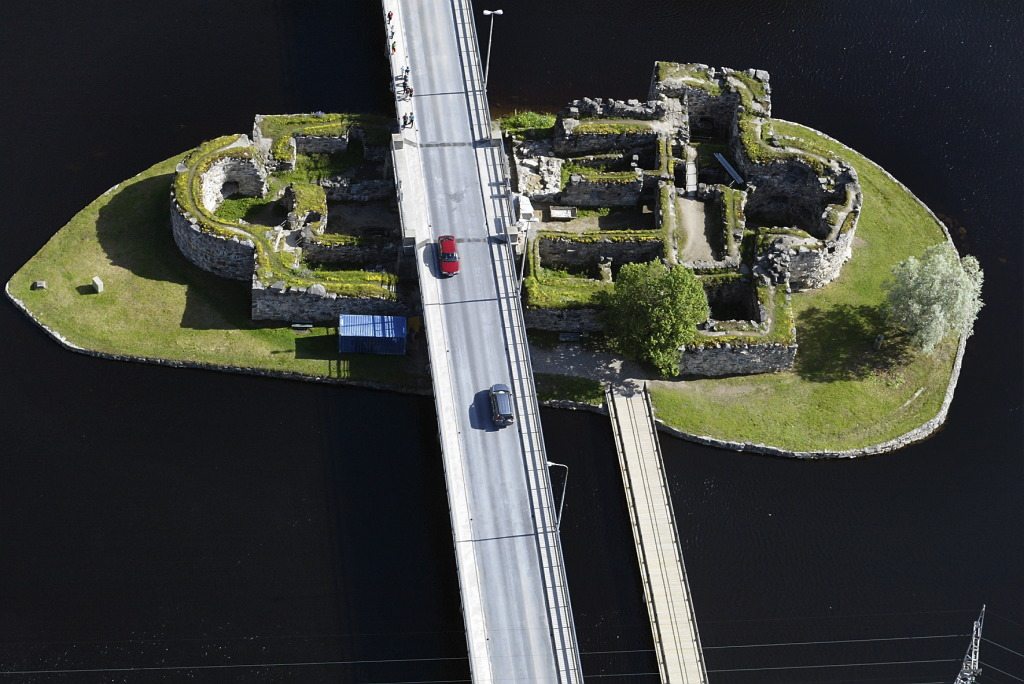
Construction of Kajaani Castle began in 1604 on the Ämmäkoski island of the Kajaani river, to help secure the north-eastern part of the Swedish empire. It functioned as a centre for governing, a prison, and a refuge for civilians during times of war. Count Per Brahe began a second construction stage in the 1650s during which many wooden structures of the castle were replaced with stone to form a fortress. It became the strongest defence fortification in northern Finland, and only fell to the Russians during the Great Northern War after a long siege. Kajaani Castle was then blown up by the Russians who had taken it.
In addition to the castles discussed above, there are also seven totally ruined castles in Finland. These are Hakoinen Castle, in Janakkala; Junkarsborg, in Karis; Korsholm Castle, in Vaasa; the Old Castle of Lieto; Sipoonlinna (or Sibbesborg), in Sipoo, Stenberga Castle, in Masku; and Oulu Castle.
Largely restored fortresses:
Suomenlinna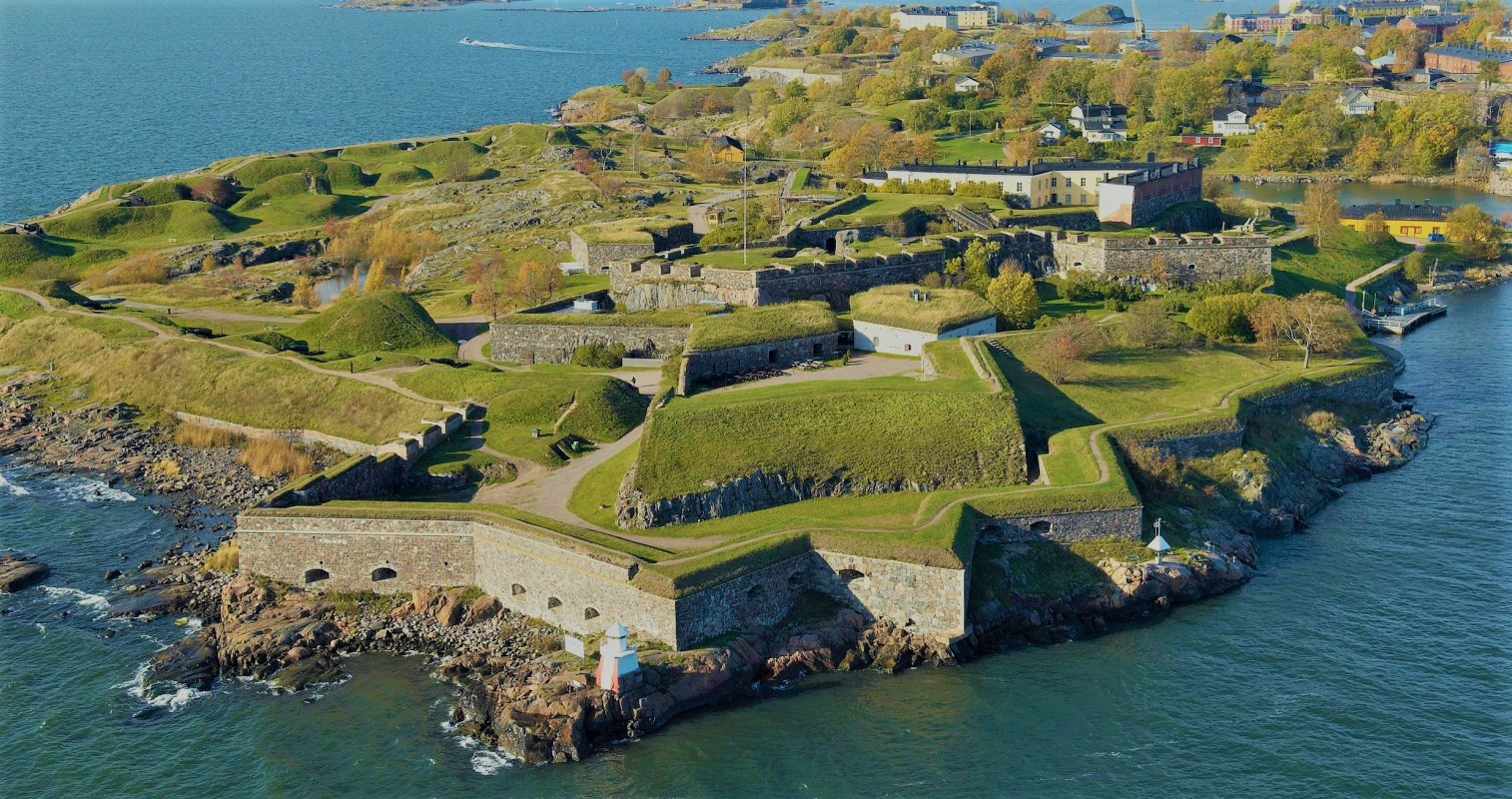
Building of the Suomenlinna fortress was begun by Sweden in 1748, at a time when Finland was still a part of the Swedish kingdom. It was the most extensive building project ever undertaken in Finland under Swedish rule, and is an excellent example of military architecture. By its completion, the military shipyard was one of the largest dry docks in the world, and a recognised centre of maritime knowledge. Originally named Sveaborg, or Viapori, its shape and appearance was determined its purpose and the six islands on which it is built.
Today, Suomenlinna is one of Helsinki’s most important tourist attractions, where almost half a million visitors visit annually. In addition, the islands are home to 900 residents, providing employment for 350 people, and has been the base for the Nordic Institute for Contemporary Art since 1978. Frequent ferry services run from the Market Square in Helsinki throughout the year.
Fortresses of Hamina
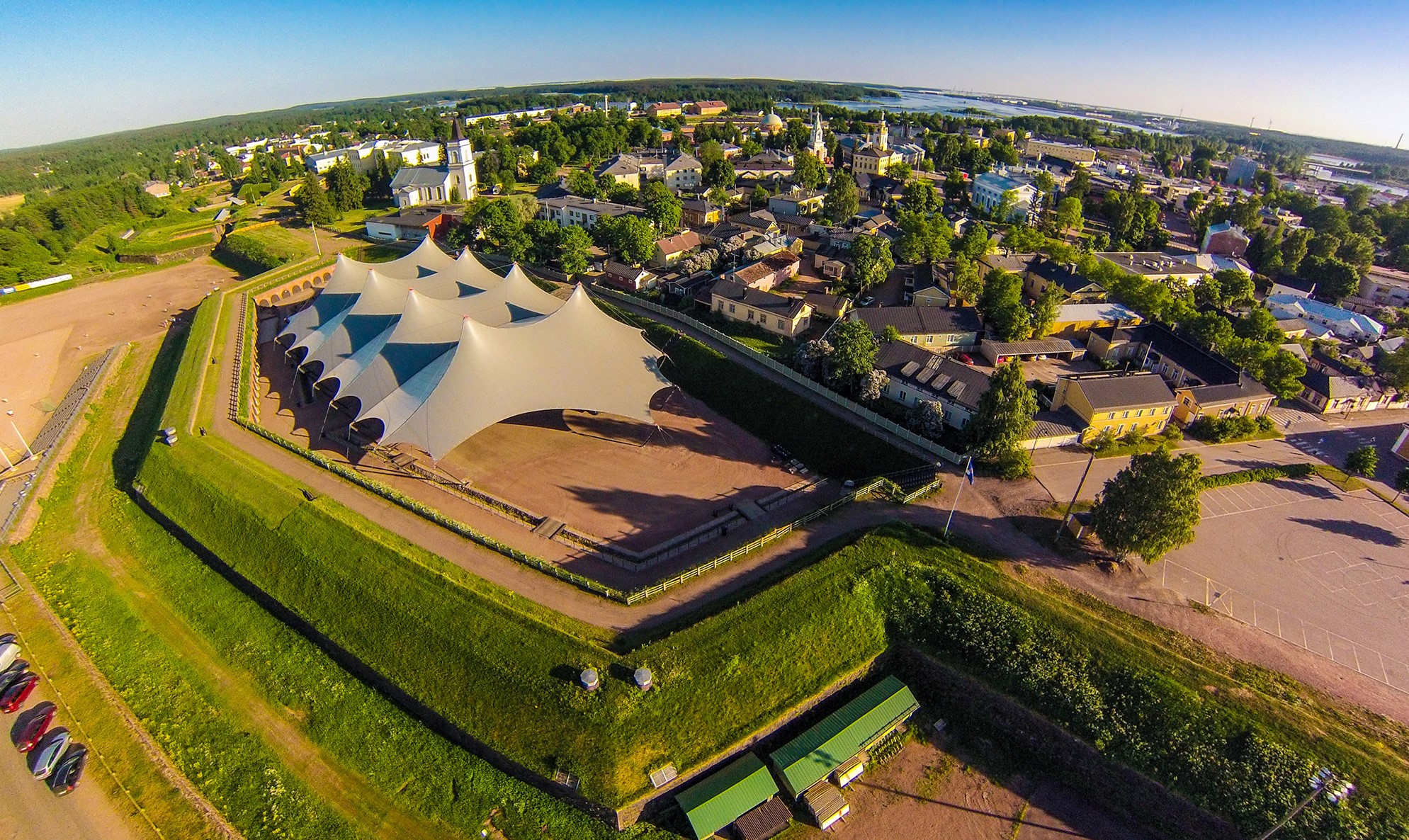
Surrounding the town of Hamina on the coast of the Gulf of Finland, the star fort of Hamina was begun by Swedish general Axel von Löwen in the early 1720s to prevent the Russian advance into the Gulf. The unfinished fort was forced to surrender to Russian troops after the Russo-Swedish War of 1741-1743, with construction continuing under General Alexander Suvorov. As a result of the Finnish War of 1808-1809, the border between Russia and Sweden moved from the Kymijoki river to the Tornionjoki river in the west, and the importance of Hamina Fort diminished. In the 1830s the fortress was abandoned, and Tsar Nicolas I gave the area to the town of Hamina. It was to see action again during the Crimean War, when it was reinforced and the position of the fortress commander was re-established.
Restoration began in 1957, and since the 1980s the Finnish National Board of Antiquities has been responsible for its renovation. Today, much of the fort remains and it is used as a venue for numerous events, most notably the international festival of military music that is held here every two years. Some parts of the fort are still in military use, with the Finnish Reserve Officer School being located here.
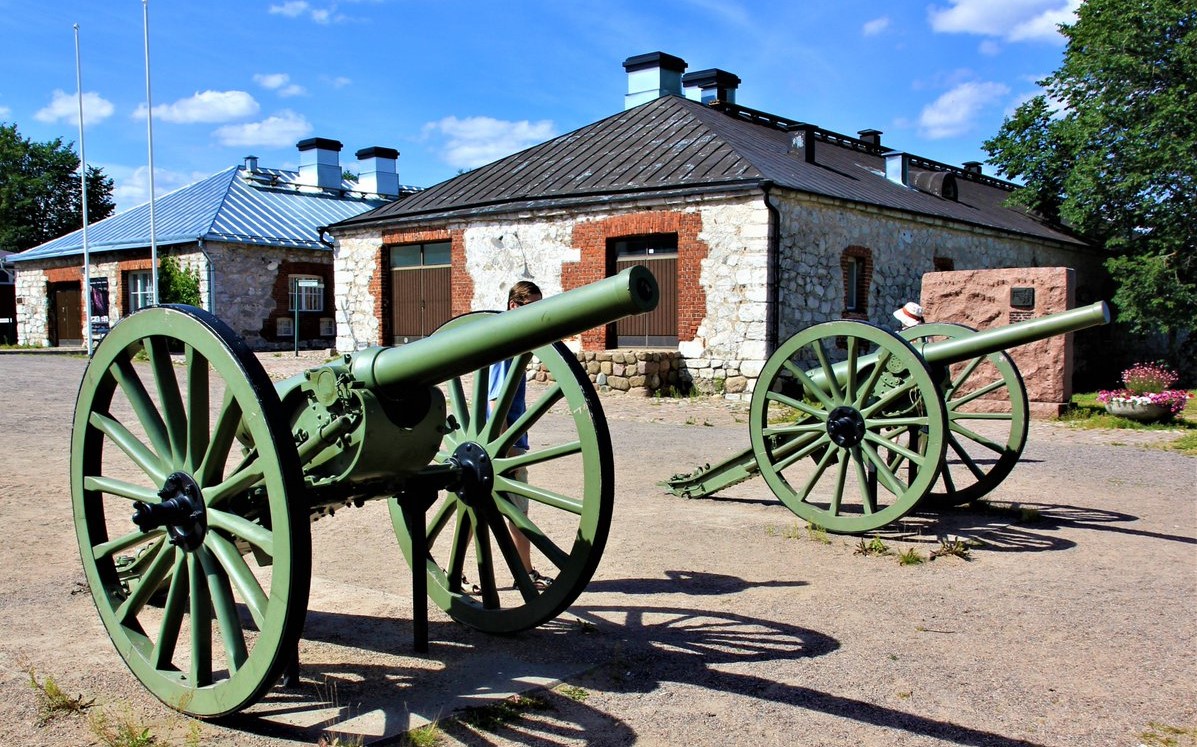
Fortress of Lappeenranta
Developed by General Alexander Suvorov on the initial fortifications of the town by the Swedes, the Fortress of Lappeenranta was completed in the 1790s. Following the Finnish War of 1808-1809, Finland became an autonomic Grand Duchy of Russia and the fortress lost its imporance in defence. During the wars of the 20th century Lappeenranta Fortress was a military area and a prison. Between 1976 and 2006 the fortress was restored, and today it is one of Finland’s top destinations to visit, housing the South Karelia Museum, South Karelia Art Museum and Cavalry Museum, as well as shops, cafés, and the oldest Russian Orthodox Church in Finland.
Kärnäkoski Fortress
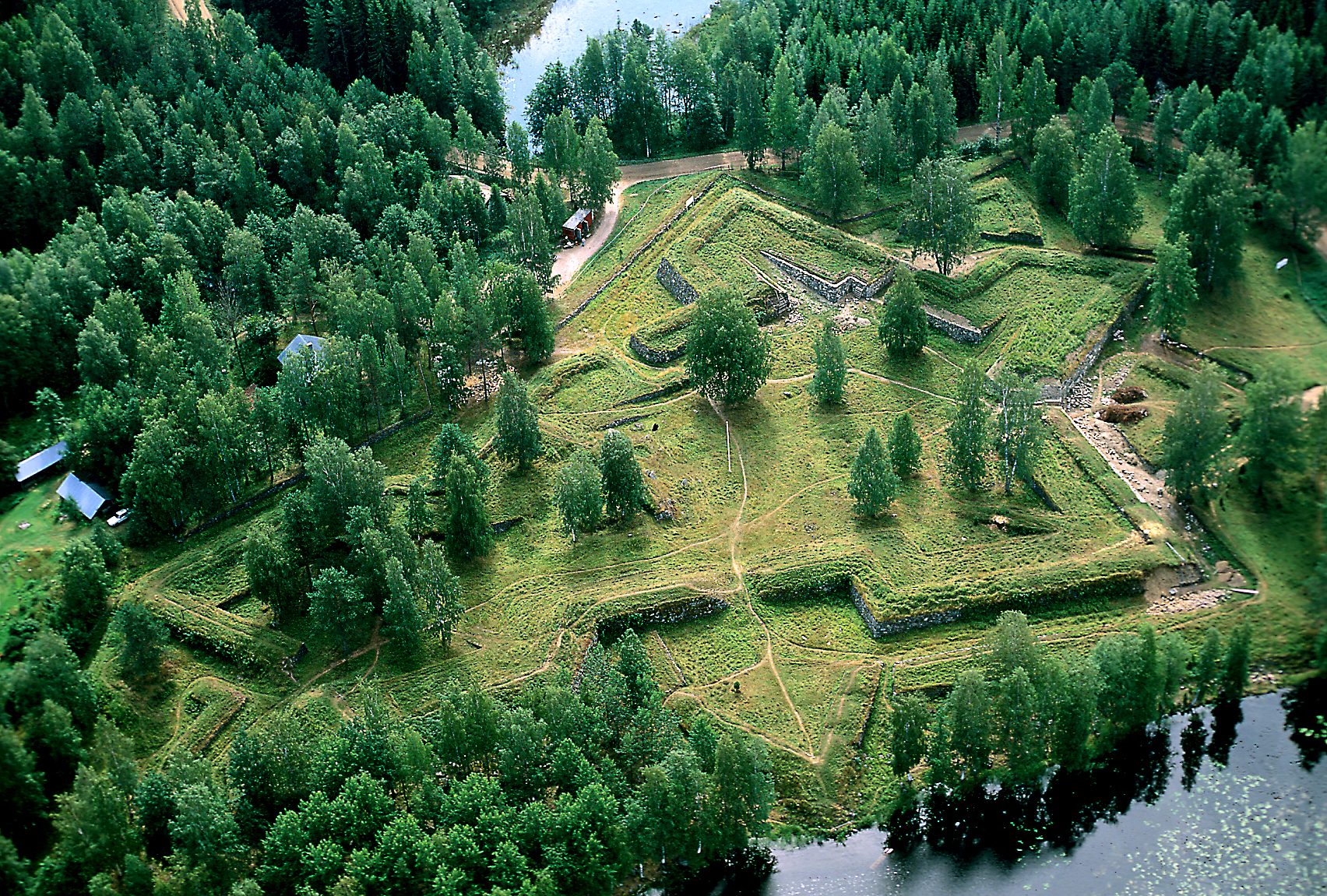
Situated in Savitaipale in South Karelia on the main road leading from Lappeenranta to Mikkeli in Savo, Kärnäkoski Fortress was built in 1791 by General Alexander Suvorov as part of a chain of forts which made up the new defense system for St. Petersburg. These fortresses were intended as a base for Russia’s Saimaa on the waterway between the fortress of Lappeenranta and Olavinlinna Castle. Kärnäkoski Fortress was built in an irregular shape, consisting of irregular interconnected bastion and tenaille walls. It now forms a part of the Kärnäkoski and Partakoski Fortresses Culture Historical Landscape and Scenic Area, which has been designated a nationally important site by the National Board of Antiquities and the Ministry of the Environment. After 1809 the fort was abandoned, and in 1989 restoration work began. The restoration of the walls was finally finished in 1997, and today is in use for tourists, although there are no regular guided tours.
Partly ruined fortresses:
Svartholma Fortress
Located on an island in the Gulf of Finland about 10km from Loviisa, Svartholma Sea Fortress was completed in the 1750s from the plans of Colonel Augustin Ehrensvärd. In 1808 it was surrendered by Sweden to Russia, and served as a jail between the 1830s and 1847. It was heavily bombarded by the British during the Crimean War, and much of it was destroyed, but a Russian garrison remained there until 1853 when it was abandoned. Restoration work began in the 1960s and major repairs were completed in time to celebrate its 250th anniversary in 1998. Nowadays, Svartholma Fortress is a popular tourist spot reachable by ferry in the summer.
Fortresses of Ruotsinsalmi and Kyminlinna
Composed of a number of separate forts, redoubts and artillery batteries, Ruotsinsalmi Sea Fortress formed the southern part of a double fortress together with Kyminlinna. Built by the Russians after the Russian-Swedish War of 1788-1790 to counter the Swedish sea fortresses of Svartholm and Suomenlinna, Ruotsinsalmi acted as an outpost of the Kronstadt sea fortress in St. Petersburg. The main fortress was Fort Katarina on Kotkansaari island, with two more large forts, Fort Elisabeth and Fort Slava, located on Varissaari island and Kukouri island. In 1855, during the Crimean War, a British and French fleet destroyed the fortifications.
Located in the northern part of Hovinsaari island in Kotka, Kyminlinna formed the northern part of a double fortress together with the Ruotsinsalmi Sea Fortress, and was intended to repulse land-based attacks along the King’s Road. It escaped unscathed during the Crimean War, and became a refugee camp during World War II for Ingrian Finns. Kyminlinna has also served as a P.O.W. Camp, a tuberculosis hospital, and as civil guard firing range, and the area is now owned by Finnish government agency Senate Properties.
Mostly ruined fortresses:
In 1832 construction began on the Bomarsund Fortress by Russia. Originally it was planned that the fortress would have 14 defesive towers, but only three were ever completed. Less than twenty years later it would be destroyed in the Crimean War by the British and French forces in 1854. In 1856, the entire Åland islands became a demilitarised zone in the Treaty of Paris, which it remains today. The ruins of Bomarsund Fortress and the towers still exist and it has become one of the most important historical monuments in Åland.
Featured
There are no listings matching your search.


